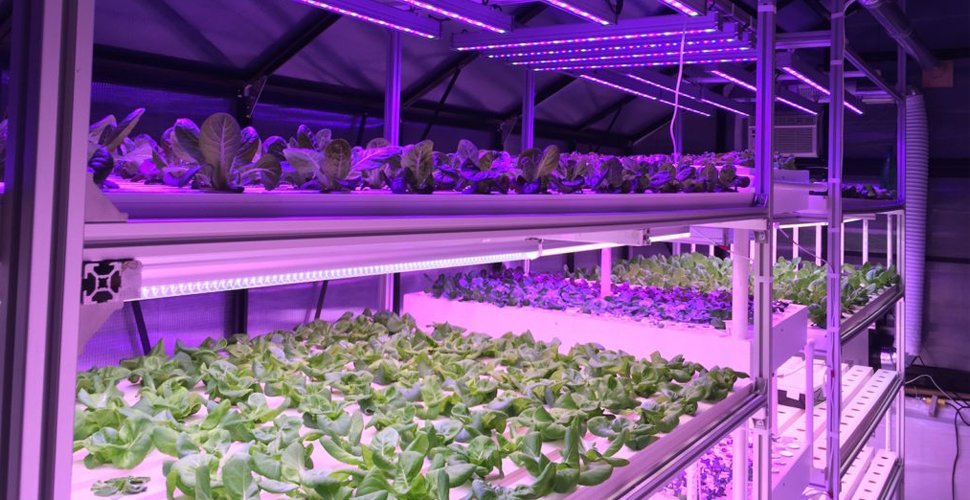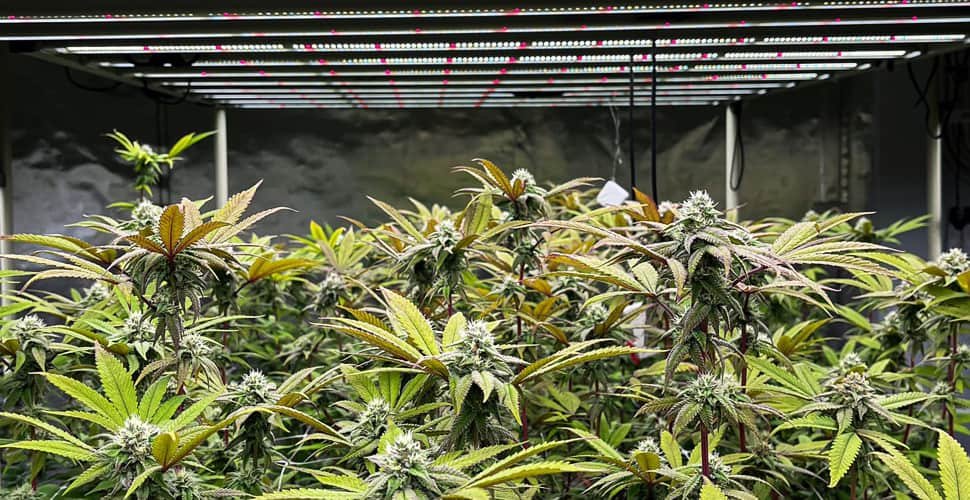Är du någon som älskar att undersöka innan du gör ett köp? Om du har sett hydroponic torn kan du ha snubblat över några negativa recensioner.
Vissa trädgårdsmästare klagar över tornets svåra design och tycker att det är frustrerande att demontera och rengöra när det är inställt. De nämner också alger och smakfulla lukt som vanliga problem.
Sådana klagomål kan få potentiella odlare att undra om hydroponics värld är mer besvär än det är värt. Det finns emellertid ett förbisett faktum dold i denna negativa feedback: regelbunden rengöring och underhåll är avgörande.
Var inte rädd för Investera i ett hydroponiskt torn – Med rätt vård kommer du att belönas med en sund växttillväxt och ett långvarigt system som du kan lita på.
Låt oss lära oss hur man rengör ett hydroponic torn och förvandlar dem till möjligheter!
Steg 1: Förberedelse och säkerhet
Att göra lämpliga förberedelser hjälper oss att utföra rengöringsarbetet på ett organiserat sätt.
1. Nödvändiga leveranser
Icke-toxisk renare
Välj en renare specifikt utformad för hydroponiska system till minst möjlig påverkan på växt- eller näringslösningskvalitet.
Mjuk borste eller borstar
Borstar med mjuka borst skyddar systemet från repor. Borstar i olika storlekar hjälper till att nå in i de små hörnen.
Städduk
Mikrofiberdukar är särskilt effektiva, eftersom de kan ta upp små partiklar och rester utan att lämna ludd bakom.
Rent vatten
Använd om möjligt destillerat eller filtrerat vatten. Syftet med det är för sköljning.
Icke-toxisk renare
En hink kommer att vara praktisk när du tappar behållaren, så att du kan lagra det smutsiga vattnet.
Icke-toxisk renare
Om det finns tecken på mögel eller bakterietillväxt, använd ett desinfektionsmedel som är säkert för växter.
2. Stäng av systemet
- Stäng av vattenpumpen. Detta säkerställer att det inte finns något vattenflöde under rengöring.
- Stäng av lamporna. Detta kan förhindra potentiell överhettning eller skada (om du växer inomhus).
- Se till att arbetsområdet är fritt från att snubbla faror. Det är tillrådligt att bära handskar när det behövs.
3. Ta bort dina växter
- Om dina växter är friska, flyttar du dem tillfälligt till ett säkert område.
- Om du ställer in nya växter, ta bort dina gamla.
- Separera de växande delarna, från toppen och kassera sedan eventuella rötter eller annat växtmaterial.
Steg 2: Draining the Tower
Korrekt dränering säkerställer att du kan komma åt och rengöra alla delar av tornet. Dessutom ger det också en möjlighet att uppdatera lösningen och skapa en hälsosammare miljö för växterna.
1. Tömning av tanken
Identifiera dräneringspunkten:
De flesta system har en utsedd dränering eller utgångspunkt. Om inte, kan du behöva sifon eller ta bort lösningen manuellt.
Tappa säkert näringslösningen:
Placera den andra änden av dräneringsslangen i en hink eller en annan behållare. Sätt i pumpen och låt den dra vatten från behållaren. När lagringstanken är nästan tom, koppla ur pumpen och häll sedan ut den återstående lösningen manuellt. Att köra pumpen utan vatten kan skada motorn.
Hantera skräp i behållaren:
Det kan finnas vissa växtskräp eller andra partiklar som samlas i behållaren. Under dräneringsprocessen använder du en sil eller nätficka för att fånga dessa partiklar.
2. Kontrollera om tecken på alger eller mögel
Algaltillväxt kan täppa till systemet och konkurrera med växter om näringsämnen. Alger eller mögel längst ner i behållaren eller sömmarna i varje modul kan skada växter och kan vara en indikator på större problem.
Steg 3: Skrubba och rengör
När vattnet är tömt kan du fortsätta med en djup och grundlig rengöring.
1. Skrubba försiktigt tornkroppen
- Rensar manuellt alla synliga växtskräp, rötter eller fallna löv från modulerna.
- Använd en mjuk borste för att skrubba bort alger, mineralavlagringar eller organiskt material från tillväxtmodulerna och reservoaren.
- Efter borstning, skölj noggrant modulerna med rent vatten.
Varmt tips: Hörn, sprickor och insidan av nätkrukor behöver också rengöras.
Till exempel i torn som Auxgrow ht06, vatten flyter nödvändigtvis till nätkrukorna. Som ett resultat finns det oundvikliga spår av gulning eller limescale på denna plats. En pensel i tandborststorlek kan också rengöra dessa sprickor bättre.
2. Kontrollera och rena rör och pumpar
- Kontrollera rören för tecken på blockeringar eller algstillväxt. Använd en rörborste för att försiktigt skrubba insidan av rören och rensa bort eventuella hinder.
- I slutet av växtsäsongen kan din vattenpump bli igensatt med ruttnande rötter och annat växtskräp. Med tiden kan detta leda till växtsjukdomar, som är orsaken till den dåliga lukten.
- Det är viktigt att demontera och rengöra vattenpumpen.
Steg 4: Desinfekt (vid behov)
Rengöring och skurning kan ta bort synlig smuts och rester på det hydroponiska tornet, medan desinficering säkerställer eliminering av skadliga mikroorganismer som inte är synliga för blotta ögat.
1. Välj ett desinfektionsmedel
- Väteperoxid är ett vanligt val för hydroponics. Det kan desinficera och syrer vattnet.
- Se till att du använder rätt koncentration, vanligtvis runt en 3% -lösning och bär alltid handskar under hanteringen.
- Tillsätt den rekommenderade dosen i vattnet och cirkulera den i hela systemet ett tag. Se till att korrekt ventilation, eftersom H2O2 snabbt kan frigöra syre under vissa förhållanden.
2. Sköljning
Även om desinfektionsmedlet är säkert för växter, skölj alltid noggrant med rent vatten efter användning.
Steg 5: Påfyllning och starta om
Detta steg handlar inte bara om att vattna systemet utan återuppbygga en miljö som är vänlig mot växttillväxt.
1. Påfyllning med färsk näringslösning
- Om du övergår från att odla sallad till tomater måste du välja eller justera näringslösningen för att tillgodose de nya växternas specifika behov.
- Om dina tidigare växter var friska och du fortsätter med samma typ, fyll bara på samma näringsmix som tidigare.
- Använd en pH -mätare och EC (elektrisk konduktivitet) mätare för att säkerställa att lösningen ligger inom det rekommenderade intervallet, lämpligt för dina växter.
2. Fyll på systemet
- Häll långsamt in näringslösningen, så att det inte finns några stänk eller spill. Minimera störningar eller potentiella skador på systemkomponenter.
- De flesta hydroponiska system har markörer eller mätare som indikerar den optimala vattennivån. Se till att reservoarnivån inte är för låg eller för hög.
3. Återinföra växterna
Växter är känsliga, särskilt deras rötter. Beroende på typ av system, placera dem försiktigt tillbaka i sina respektive positioner.
4. Starta om systemet
- Börja med att slå på vattenpumpen och se till att vattencirkulationen är smidig och obehindrad. Och slå på lamporna och andra systemkomponenter.
- Under de första timmarna eller till och med dagar, håll ett öga på växterna för tecken på stress, såsom vissnande eller missfärgning, och adressera dem snabbt.
Jayes
Som Digital Marketing Manager på AUXGROW kombinerar Jayes en passion för hydroponiska system och expertis inom LED-odlingslampor. Med praktisk erfarenhet och en djup förståelse guidar Jayes dig genom en värld av hållbar odling.






